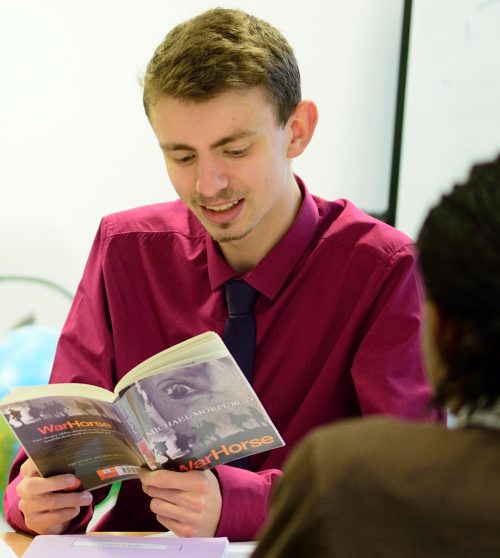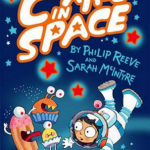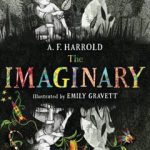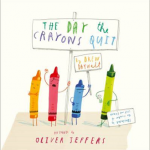
March 2, 2017, by Rupert Knight
Using quality children’s literature in the classroom: it’s win win!
When was the last time you immersed yourself in a good book? In the midst of a busy term, I suspect the answer is – not for a while! When was the last occasion you read a children’s book?
The answer to this may vary, but in this blog Gill Johnson considers what we mean by quality children’s literature and how its use may make a positive difference in the classroom.
Using quality children’s texts can make life so much easier for teachers planning English and so much more enjoyable for the children in the classroom. Reading for pleasure is embedded in the National Curriculum, so perhaps it’s time to explore or rediscover the joy of texts.

What do we mean by quality children’s literature?
Although the quality of any book may be a matter of opinion (think of the controversy surrounding national book awards!) – there are some suggested boxes to tick in looking for a quality children’s text to use in the classroom (Wyse and Jones, 2008).
- Interesting and engaging?
Some children’s books can be remarkably bland and ‘one dimensional’ – a quality children’s book is likely to hold your attention in several ways: through the creative use of language, the engaging characters and storyline, and/or the effective use of illustrations.
- Links possible with meaningful experiences?
There are many strong arguments in reading research that to develop comprehension skills effectively we need to enable children to make meaningful connections with the story. This was the theme of our School of Education primary conference back in September of this year. If children can make connections with their own experience a story is likely to be far more engaging and memorable.
- Support strong narrative?
We all love a good story! Many writers suggest that storytelling is a fundamental part of our identity as human beings. Barbara Hardy (1977:12) describes narrative as a ‘primary act of mind’. Story helps us to make sense of ourselves, other people, and the world around us.
- Distinctive voice of the author?
Some authors write in a style or ‘voice’ that stays with the reader long after the book has finished. Sometimes, to achieve this, authors break rules. This can become a discussion point with children – seeing how writers choose to use grammar and punctuation reminds children that they have choices to make in learning to write well.
- Playful and memorable?
Some authors play with words, the story, and the reader. This creates an experience, in itself, that children can use to develop their own writing
- Learning opportunities?
As a teacher, you want to be mindful of the ways in which learning might be developed using a children’s book. This may extend beyond English to include other curriculum subjects and PSHE to deepen the connections and engagement with themes in the book.
- Effective structure?
A well-structured story is satisfying and rewarding to read, it also provides a good model for children to consider when they are writing their own stories.
- Knowledge development?
From a teacher’s perspective, you would want to consider which books might best serve your purposes in developing vocabulary, spelling, grammar and punctuation – skills which can be successfully embedded within a plan of work linked to a children’s book. See Debra Myhill’s thoughts on embedding grammar on Youtube.

How does using children’s literature make life easier?
Many teachers committed to using quality texts find that the quality of teaching and learning is enhanced. There are so many opportunities for rich discussion of language and vocabulary. Developing the NC language comprehension skills (checking, asking questions of the text, drawing inferences and predicting) associated with independent reading are better enabled through the use of quality texts: there is simply more scope.
I say it’s easier – but really, I mean in terms of making English more enjoyable and enabling more meaningful connections with the text. Adopting an integrated approach to planning using a children’s book, involves a careful selection of the text (so you have to read several books to decide!) and careful planning to cover the scheme of work required by your school. However, you are likely to reap the rewards in children who are excited, engaged and motivated to read and write more and more.

How can I find quality children’s literature?
Time is always in short supply for teachers. Here are some links to find good books to read and – perhaps – plan to use with your children.
- UK Literacy Association (UKLA) has a list of books shortlisted for annual book awards. They also run a competition for teachers called the John Downing award which celebrates a class response to shortlisted books
- LoveReading4Kids helps with the selection of books to read
- Norfolk Children’s Book Centre – Marilyn Brocklehurst is at the helm of this bookshop and is a fount of knowledge about the books she stocks. Fortunately, she is happy to share this knowledge!
- Centre for Literacy in Primary Education (CLPE) offers some suggested book lists and free resources
- For lots of resources on promoting a love of reading, try Book Trust.
- Just Imagine is a website seeking to promote excellent reading and writing in schools
- Books for Keeps is an online, independent children’s book magazine
- Madeleine Lindley Ltd is a company committed to bringing teachers the best and most up-to-date books for children. They offer a huge variety of book packs

Please share your thoughts in response to this blog or share your experiences of using children’s literature in the classroom.
References
Hardy, B. 1977 The Cool Web: The Pattern of Children’s Reading. London: Bodley Head
Wyse, D. and Jones, R. 2008, Teaching English, Language and Literacy (2nd edition). London: Routledge

I think it’s easy to see how powerful good literature can be as a large proportion of adults (at least the ones I have met) can remember, with some powerful emotions, those books that have had an impact for them years and years later. Of course we also have to be aware that the human limbic system would also be inclined to remember any strong negative association with literature so any literature chosen for other people (including children) surely has to be done so wisely and considered. What I wonder though is if someone does have those negative associations with certain books/literature can this perception be changed?
I think these negative associations with a book can be changed if an experience with the book is provided which creates positive feelings. In the classroom, it is so important to have knowledge of the children as readers, their personal identity as readers and their social and cultural context so that we can use this knowledge when choosing texts for them to engage with. We all have rights as a reader and it important to think about how we consider these readers’ rights as a teacher and enthusiast of reading.